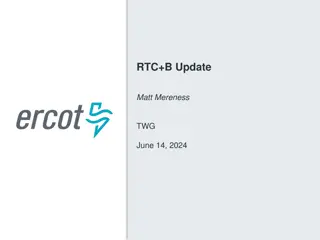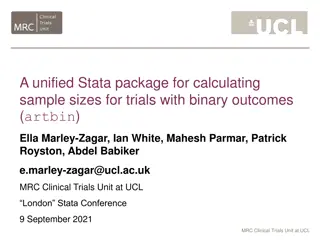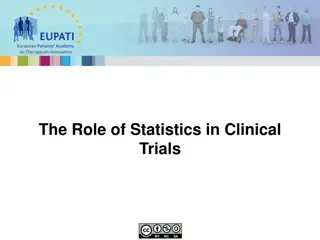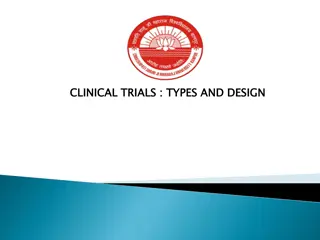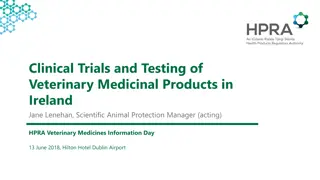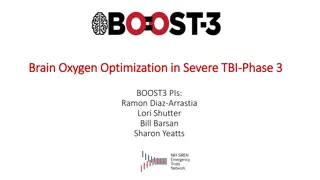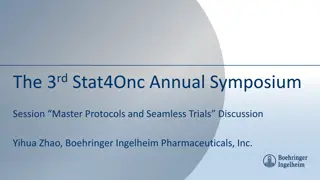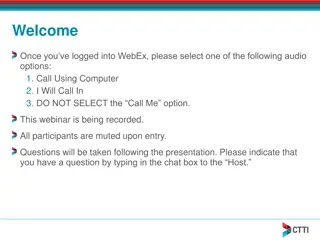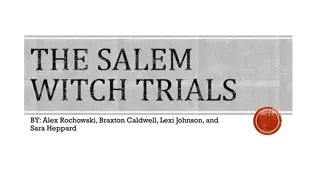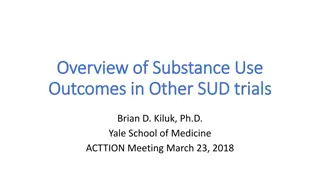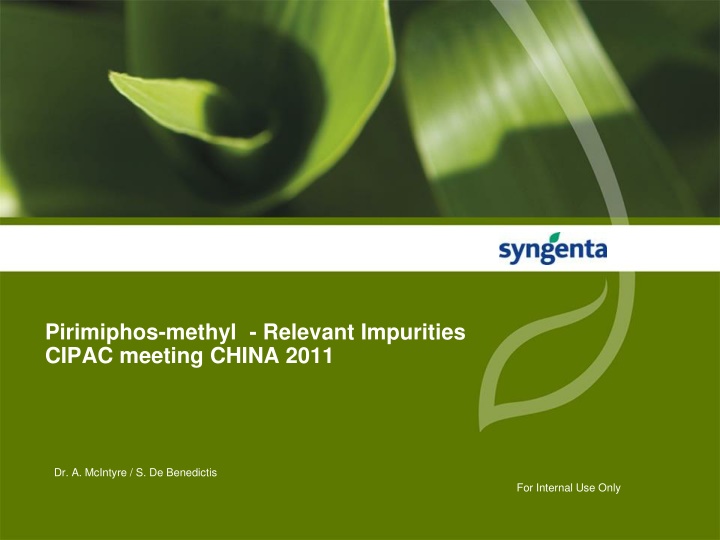
Determination of Relevant Impurities in Pirimiphos-Methyl Formulation
Learn about the relevant impurities of pirimiphos-methyl discussed at a CIPAC meeting in China in 2011. This includes the nomenclature, structures, methodology, and determination methods utilized for iso-pirimiphos-methyl in the formulation.
Download Presentation

Please find below an Image/Link to download the presentation.
The content on the website is provided AS IS for your information and personal use only. It may not be sold, licensed, or shared on other websites without obtaining consent from the author. If you encounter any issues during the download, it is possible that the publisher has removed the file from their server.
You are allowed to download the files provided on this website for personal or commercial use, subject to the condition that they are used lawfully. All files are the property of their respective owners.
The content on the website is provided AS IS for your information and personal use only. It may not be sold, licensed, or shared on other websites without obtaining consent from the author.
E N D
Presentation Transcript
Pirimiphos-methyl - Relevant Impurities CIPAC meeting CHINA 2011 Dr. A. McIntyre / S. De Benedictis For Internal Use Only
Relevant impurities nomenclature and structure - O,O-dimethyl phosphorochloridothioate (DMPCT, CAS No. 2524-03-0) - O,O,O-trimethyl phosphorothioate (MeOOOPS, CAS No. 152-18-1) - O,O,S-trimethyl phosphorothioate (MeOOSPO, CAS No. 152-20-5) - O,O,S-trimethyl phosphorodithioate (MeOOSPS, CAS No. 2953-29-9) - O-2-diethylamino-6-methylpyrimidin-4-yl-O,S-dimethyl phosphorothioate (iso-pirimiphos-methyl, CAS No. 76471-79-9). 2 For internal use only
Relevant impurities nomenclature and structure Name R Number Structure DMPCT R305032 S Cl O P O MeOOOPS R65249 S O O P O MeOOSPO R348532 O O S P O Structures 3 For internal use only
Relevant impurities nomenclature and structure Name R Number Structure MeOOSPS R305910 S O S P O Iso- R37292 O O S pirimiphos P N N O N Structure 4 For internal use only
Methodology Overview Initial aim was to have a single method for all 5 relevant impurities. GC-MS was originally chosen as this appeared to provide the complete answer due to the structures Standard addition had to be used as the matrix effects of the capsule suspension could not be overcome The iso-pirimiphos standard proved not to be stable and therefore could not be used within the standard addition method. It could ,however, be measured within the Technical AI method with the pirimiphos-methyl as the reference material. Two methods had to be used for the relevant impurities 5 For internal use only
Determination of the relevant impurity Iso- Pirimiphos-methyl in Pirimiphos-methyl formulation CS 300 by GC-FID small scale collaborative trial (CIPAC) 6 For Internal Use Only
relevant impurity GC-FID Outline of the Method Iso-Pirimiphos-methyl by GC-FID The sample containing pirimiphos-methyl is dissolved in acetone, containing an internal standard, and the iso-pirimiphos-methyl content determined (g/kg) by capillary gas chromatography using split injection and flame ionisation detection. Pirimiphos-methyl is used as the calibrant due to the degradation issues with the iso-pirimiphos-methyl 7 For Internal Use Only
relevant impurity Free AI GC-FID Method Parameters Column: Fused silica, length 15 m x 0.25 mm internal diameter. DB-1 or equivalent phase, with film thickness of 0.25 m (crosslinked dimethyl polysiloxane). Oven temp program: temp 1 60 C, hold 0 min, ramp rate 25 C/min temp 2 100 C, hold 0 min, ramp rate 40 C/min temp 3 280 C, hold 1 min. Flow : 2ml/min Split: 100:1 Retention times Pirimiphos-methyl Iso-pirimiphos-methyl Internal standard 4.9 min approx. 5.2 min approx. 5.5 min approx. 8 For Internal Use Only
relevant impurity GC-FID Calculations s I P f r = H i s f H w Content of pirimiphos-methyl = g/kg w I q where: fi Hs Hw Ir Iq s w P = individual response factor (of pirimiphos-methyl) = peak area of pirimiphos-methyl in the calibration solution = peak area of Iso-pirimiphos-methyl in the sample solution = peak area of the internal standard in the calibration solution = peak area of the internal standard in the sample solution = mass of the pirimiphos-methyl reference standard in the calibration solution (mg) = mass of sample taken (mg) = purity of pirimiphos-methyl reference standard (g/kg) 9 For Internal Use Only
relevant impurity GC-FID Participants Bruno Patrian Agroscope, W denswil, Switzerland Dr. J. Distler BASF SE, Limburgerhof, Germany Barbara Hinz Cheminova, Lemvig, Denmark J rg Weber Syngenta Crop Protection M nchwilen AG, M nchwilen (CH) 10 For Internal Use Only
relevant impurity GC-FID Samples Pirimiphos-methyl 300 CS ( 1 sample ) Internal standard 4,4 dimethoxybenzophenone Pirimiphos-methyl reference standard (purity 99.2 %w/w) 11 For Internal Use Only
relevant impurity GC-FID Test chromatogram 50 50 Front Signal P100.2 Retention Time Name 40 40 30 30 Iso-pirimiphos-methyl pA pA 20 20 pirimiphos-methyl 10 10 5.19 6.93 4.74 5.83 IS 4.88 5.55 0 0 0 1 2 3 4 5 6 7 Minutes 12 For Internal Use Only
relevant impurity GC-FID Outline of the method validation Due to the lack of stable reference standard for Iso- pirimiphos-methyl, Pirimiphos-methyl reference standard was used as calibrant. Linearity/recovery was determined using CS 300 formulation at 3 concentrations (50%, 100% and 150% of the prescribed sample amount) for each concentration 2 replicates and double injection (4 determinations) this is equal to 0.25% - 1.0% Iso-pirimiphos relative to Pirimiphos-methyl Recovery was determined using Level 2 and Level 3 Repeatability determined using 5 replicates 13 For Internal Use Only
Validation Key figures for Iso-Pirimiphos-methyl relevant impurity GC-FID Linearity Recovery Repeatability correl.coeff 0.5% level 0.8% level Lab 1 0.9997 99.7 100.1 1.82 g/kg RSDr: 1.5% Lab 2 0.9997 100.3 100.5 1.93 g/kg RSDr: 0.9% Lab 3 0.9997 101.4 102.1 1.83 g/kg RSDr: 1.3% Lab 4 0.9994 98.4 100.8 1.94 g/kg RSDr: 0.8% 1.88 g/kg mean Acceptance criteria 0.06377 SD 80-120% 3.39 RSDR Calculated on the Lab means 3.46 RSDR(mod Hor) 14 For Internal Use Only
Validation Key figures Limit of Quantification relevant impurity GC-FID Recovery data at level 1 indicates that the impurity is quantifiable at the 0.25% level relative to the Pirimiphos- methyl. (approx 0.7 g/kg) Lab Mean Recovery 1 2 3 4 97.1 98.9 101.1 100.7 15 For Internal Use Only
relevant impurity GC-FID Conclusion Excellent agreement of the validation key figures All acceptance criteria passed We consider the method to be suitable We recommend to accept the method as provisional CIPAC method 16 For Internal Use Only
Determination of the relevant impurities DMPCT, MeOOOPS, MeOOSPO, MeOOSPS, in Pirimiphos-methyl formulation CS 300 by GC-MS small scale collaborative trial (CIPAC) 17 For Internal Use Only
relevant impurity Outline of the Method DMPCT, MeOOOPS, MeOOSPO and MeOOSPS by GC-MS GC-MS The sample containing pirimiphos-methyl is dissolved in acetone, containing an internal standard. Aliquots are taken and spiked with known amount of all 4 relevant impurities. Standard addition methodology used due to the complex matrix. The relevant impurity content is determined (g/kg) by capillary gas chromatography using split injection and mass spectrometry. 18 For Internal Use Only
relevant impurity Method Parameters GC-MS Column: Fused silica, length 30 m x 0.25 mm internal diameter. DB-1 or equivalent phase, with film thickness of 0.25 m (crosslinked dimethyl polysiloxane). Oven temp program: temp 1 50 C, hold 0 min, ramp rate 20 C/min temp 2 280 C, hold 5 min Flow : 1 ml/min (constant flow) Split: 160:1 19 For Internal Use Only
relevant impurity Method Parameters GC-MS Retention times DMPCT: 3.7 min (approximate) MeOOOPS: 3.8 min (approximate) MeOOSPO: 4.6 min (approximate) MeOOSPS: 5.2 min (approximate) Pirimiphos-methyl : 10.1 min (approximate) Iso- Pirimiphos-methyl: 10.6 min (approximate) (for identity only) Internal standard: 11.3 min (approximate) 20 For Internal Use Only
Calculations (I) relevant impurity GC-MS Calculate the mass of respective impurity added (si) for each of the levels. S P V s i =1000 s i V D s Where: Si Ss P Vi Vs D These Si values represent the x-values for the calculation of the slope. = = = = mass of respective impurity added per respective level (mg) mass of respective impurity in reference standard stock solution (mg) purity of the respective impurity (g/kg) Volume of reference standard working solution used to spike each level (ml) Volume of the reference standard stock solution (= 100, if followed as described above) Dilution factor to obtain the reference standard working solution (= 10, if followed as described above) = = 21 For Internal Use Only
Calculations (II) relevant impurity GC-MS Calculate peak area ratios (Rw) of the respective impurity and the internal standard H s R = w I q Where: Rw Hs Iq = = = Peak area ratio of respective impurity Peak area of respective impurity Peak area of the internal standard These Rw values represent the y-values for the calculation of the slope. 22 For Internal Use Only
Calculations (III) relevant impurity GC-MS Calculate slope and intercept of the linear regression line Calculate the mass of the respective impurity present in the sample: 1000 10 b g/kg = M a w where: M b a w = = = = mass of the respective impurity present in the sample (g/kg) intercept of the linear regression line slope mass of sample (mg) 23 For Internal Use Only
relevant impurity Participants GC-MS Bruno Patrian Agroscope, W denswil, Switzerland Dr. J. Distler and Dr. R Foerster BASF SE, Limburgerhof, Germany Barbara Hinz Cheminova, Lemvig Denmark Antonios Kouzoumis Syngenta Crop Protection M nchwilen AG, M nchwilen (CH) 24 For Internal Use Only
relevant impurity Participants GC-MS Due to the tight schedule and additional instrument failures One of the labs, Lab 3, was only able to perform 2 out of 5 replicates 25 For Internal Use Only
relevant impurity Samples GC-MS Pirimiphos-methyl 300 CS ( 1 sample ) Internal standard 4,4 dimethoxybenzophenone reference standards of DMPCT, MeOOOPS, MeOOSPO and MeOOSPS 26 For Internal Use Only
relevant impurity Test chromatogram GC-MS D:\DSQ\...\GLP1\SampleA5_02 1 ul Sample A5 08.04.2011 20:32:54 RT: 3.50 - 5.40 NL: 1.50E5 TIC MS ICIS SampleA5_ 02 MeOOOPS 100 90 MeOOSPS MeOOSPO 80 DMPCT 70 Relative Abundance 60 50 RT: 3.78 AA: 48180 40 RT: 5.23 AA: 33704 30 RT: 3.68 AA: 26605 RT: 3.85 AA: 264 RT: 4.62 AA: 19772 20 10 RT: 4.45 AA: 412 RT: 3.92 AA: 283 RT: 4.25 AA: 72.91 0 3.6 3.8 4.0 4.2 4.4 Time (min) 4.6 4.8 5.0 5.2 5.4 RT: 10.30 - 11.80 NL: 7.00E4 TIC MS ICIS SampleA5_ 02 100 Internal standard Iso-PM 90 80 70 Relative Abundance 60 RT: 10.60 AA: 32173 50 40 30 RT: 11.32 AA: 11830 20 RT: 10.68 AA: 201 10 RT: 10.36 AA: 137 0 10.4 10.6 10.8 11.0 Time (min) 11.2 11.4 11.6 11.8 27 For Internal Use Only
relevant impurity Outline of method validation (I) GC-MS 5 sets of standard addition were carried out each solution injected twice. Linearity was determined for each of the 5 sets o standard addition has been performed on the following absolute levels L1:0.05%, L2:0.10%, L3:0.15%, L4:0.20% & L5:0.25% Relative to Pirimiphos-methyl the values are L1:0.17%, L2:0.34%, L3:0.51%, L4:0.68% & L5:0.85% 28 For Internal Use Only
relevant impurity Outline of method validation (II) GC-MS Recovery was determined using L 3 (nearest to specification level); mean recovery was calculated using all 5 sets Repeatability was determined using L 3 (nearest to specification level); mean recovery was calculated using all 5 sets 29 For Internal Use Only
Validation Key figures for DMPCT relevant impurity GC-MS Linearity Recovery Repeatability 0.5% level correl.coeff 0.5% level Mean RSDr Lab 1 0.9886 91.0% 1.33 g/kg 4.9% Lab 2 0.9751 91.0% 1.23 g/kg 10.9% Lab 3 0.9922 93.7% 1.38 g/kg 0.9% Lab 4 0.9887 91.6% 1.31 g/kg 4.6% 1.31 g/kg mean 0.062 SD Acceptance criteria 4.75 RSDR 80-120% 3.46 RSDr(mod Hor) 30 For Internal Use Only
Validation Key figures for MeOOOPS relevant impurity GC-MS Linearity Recovery Repeatability 0.5% level correl.coeff 0.5% level Mean RSDr Lab 1 0.9916 99.0% 1.50 g/kg 4.9% Lab 2 0.9795 103.0% 1.49 g/kg 14.1% Lab 3 0.9965 98.3% 1.51 g/kg 5.3% Lab 4 0.9970 96.6% 1.58 g/kg 5.22% 1.52 g/kg mean 0.04 SD 2.69 RSDR 3.46 RSDr(mod Hor) 31 For Internal Use Only
Validation Key figures for MeOOSPO relevant impurity GC-MS Linearity Recovery Repeatability 0.5% level correl.coeff 0.5% level Mean RSDr Lab 1 0.9953 96.9% 1.37 g/kg 4.7% Lab 2 0.9810 102.4% 1.69 g/kg 13.9% Lab 3 0.9922 97.0% 1.47 g/kg 1.5% Lab 4 0.9977 97.1% 1.63 g/kg 4.6% 1.54 g/kg mean 0.146 SD 9.5 RSDR 3.46 RSDR(mod Hor) 32 For Internal Use Only
Validation Key figures for MeOOSPS relevant impurity GC-MS Linearity correl.coef f Recovery Repeatability 0.5% level 0.5% level Mean RSDr Lab 1 0.9971 96.3 1.41 g/kg 2.6% Lab 2 0.9810 102.3 1.27 g/kg 13.4% Lab 3 0.9981 99.0 1.22 g/kg 2.5% Lab 4 0.9920 97.7 1.27 g/kg 6.88% 1.30 g/kg mean 0.0985 SD 7.58 RSDR 3.46 RSDR(mod Hor) 33 For Internal Use Only
Validation Key figures Limit of Quantification relevant impurity GC-MS Recovery data at level 1 indicates that the impurity is quantifiable at the 0.17% relative to Pirimiphos-methyl . (approx 0.5 g/kg) Lab 1 93 100 96 100 Lab 2 79 95 93 94 Lab 3 84 89 88 97 Lab 4 78 98 97 96 DMPCT MeOOOPS MeOOSPO MeOOSPS 34 For Internal Use Only
relevant impurity Conclusion GC-MS Good agreement of the validation key figures for all 4 impurities Higher RSD due to MS-detection, but still within acceptable limits for the mean values, all below10%. We consider the method to be suitable We recommend to accept the method as provisional CIPAC method 35 For Internal Use Only
Thank you Thank you Special Thanks to all laboratories and their staff participating in this highly resource demanding collaborative trial 36 For Internal Use Only




